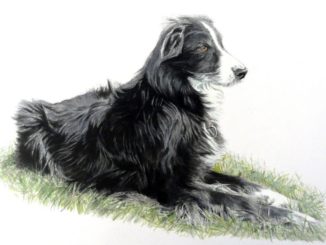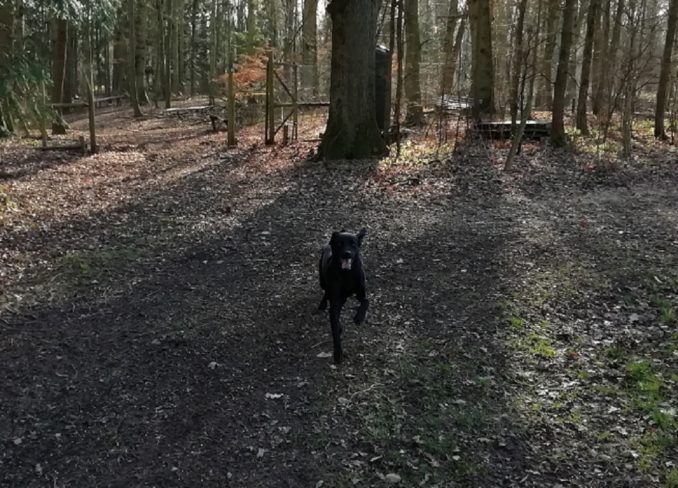
There is no such thing as the perfect gundog, and anyone who says there is should be ashamed of the barefaced lies they tell. There are some incredibly well trained dogs out there, and some equally gifted trainers, but they will all have their good days and bad days. Over my time in the field, I’ve seen complete amateurs unable to perform the simplest of retrieves, all the way through to multiple trial champions* working, seemingly effortlessly, either individually or as part of a pack. Each animal is as unique as their owner, and they are all amazing in my eyes from the lowly beating dog, all the way through to the thoroughbred HPR, high up on the moors, where the grouse cost £1000 a brace. That your hunting companion might spend more time running amok in a maize strip, or rolling in a particularly pungent pile of fox mess than sitting obediently at your heel, ready for the almost imperceptible nod that indicates it is time to go about its business really doesn’t matter. What counts is the bond between you and your hunting companion, a bond that sometimes approaches symbiosis and one that is forged by countless hours together, whether you are out on the marsh or in the thick of a covert, or simply walking the bridleways and byways immersed in nature. This is the story of my current ‘Top Dog’, average as gundogs go, but priceless to me as all dogs are to their owners.
*Trialling is effectively competitive gundog handling, with different categories for type and discipline. Top trial champions (FTch) are incredibly valuable as stud dogs and puppies from multiple trial champion lines will command the very highest prices.
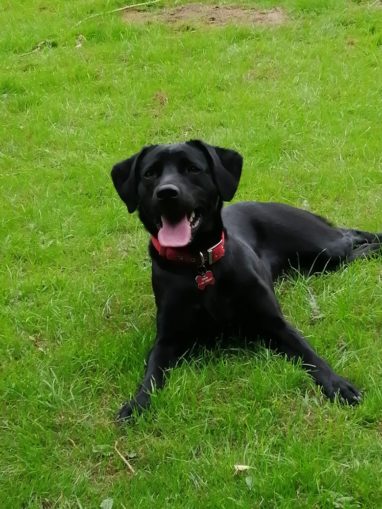
Winnie is a Labrador Retriever, from very good lines (11 FTch in the last 6 generations), a bitch (in more ways than one) and now my number one or Top Dog. She is four, so not even in her prime yet as a working dog. A small, slender and lightweight example of the breed, she is far from the typical image of the chunky, ruffled and slobber chopped Labs one sees pulling their owner down the street for walkies. Show type, or ‘American’ Labradors conform more to this stereotype, as they are more likely to display the desirable traits, or breed standard that judges are looking for at shows like Crufts. Working type or ‘English’ Labradors will tend to being more athletic, longer legged, with smaller narrower heads, and longer snouts. But none of this matters, as the differences are merely skin deep, and in reality they come in all shapes and sizes and all have the potential to be fine gundogs. Winnie is an excellent swimmer as most retrievers are, has a particularly good nose, and almost Spaniel like energy. If I was to pick out her one outstanding attribute, it would have to be her face. As a famous gundog breeder and handler remarked to me one day when I was attending a Trial, “My, what a beautiful dog! Such a pretty face”. Pity her performance didn’t match her looks on that particular day.
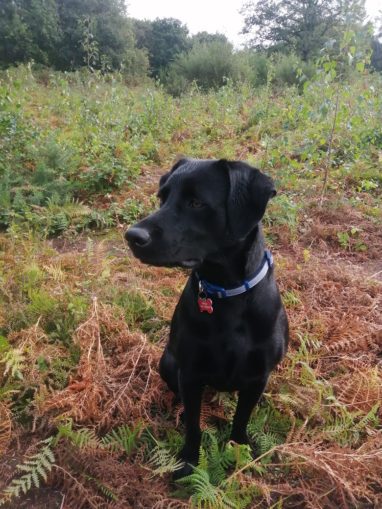
All my dogs have always been pets first and foremost. This is something I can thank my wife for introducing me to, and as such they are a part of the family, they live in the house with us, they go out with us everywhere they are permitted and they all have their own special places on the sofa. A lot of professional gundog owners and trainers will allow no crossover between the pet dog and the worker. That a dog can only have one master is probably true, so interacting with only the trainer and not other sundry members of family and friends is almost certainly likely to produce a more obedient dog (at least for the trainer), but not necessarily a better example of a working dog. Some say allowing a dog into the house creates too much familiarity and blurs the line between master and hound, or makes the animal soft, but I have to say that in my experience none of these things are true, and having tried both approaches, the animals are happier, healthier and more rounded if they are made a part of the family rather than be kept at arm’s length. My father, with over 60 years of training and owning gundogs, including several trial champions and a modestly successful line of springer spaniels in the 80s and 90s is decidedly old school in his approach, and has only recently allowed select members of his pack, usually the oldest to cross the threshold. Are his dogs any ‘better’ in the field than mine? Not in any way I can see, and asking several mutual acquaintances whether or not they could see a noticeable difference in performance between our current top dogs, the only tangible thing they can point to, and it was something they all noted, is that my father’s dogs are far more highly strung than mine. Given that some of them are from the same lines, this is unlikely to be a genetic trait and far more likely learned behaviour.
As there are many dog owners amongst us on here, I won’t bore you with the minutiae of puppy training and the basic commands we all teach our hounds. ‘Proper’ training started relatively earlier for Winnie than any other dog I have owned, as she seemed to mature emotionally at a young age, in contrast to her ‘baby’ sister, who at just over two has yet to fully grow out of puppyhood. Despite having the body of an adult, she has only mastered the most basic parts of my own training regime, and will not see any serious action this season. This doesn’t bother me in the slightest, as you won’t get two dogs that mature in the same way, and her innocence and boundless energy are an absolute joy to behold. She has great potential, but forcing her too early will ruin her forever, so if I have a top gundog training tip, it would be to let them develop at their own pace. Returning to the Top Dog, an anomaly I will probably never see again, she was doing limited work in the field at 9 months, and not disgracing herself, and competing in novice trials the following year.

On the subject of trialling, this is something I don’t generally do with my dogs, as none of them are judge perfect and never will be. I was encouraged to enter Winnie in some novice trials by a trainer friend (who helped me in the early training of my previous two) and was interested in taking her on as a more serious project as she showed so much early promise. After a couple of run outs, we decided that I would do all her training myself as she really didn’t need much more work than a bit of fine tuning, and I didn’t intend to show her. Subsequently, I have entered her in a few local competitions to judge her progress and at some fun outings like game fairs. She is frustratingly average when a judge is watching, probably more to do with my state of mind than hers, and this is something I will have to work on in the future. The trialling world is something I may take a more serious interest in when I have more time on my hands, but life as always gets in the way.
Training Winnie was far easier than either her predecessor Jess or her little sis is proving to be. It is often the case that a Labrador’s instinct to retrieve and pursue injured game is easy to unlock, whereas you must work hard to temper the raw hunting instincts of a spaniel, let alone train obedience and tame their natural exuberance, and this was certainly the case with Winnie. A term people in the gundog training world often use is ‘biddable’. It simply means how readily the dog is prepared to follow instruction and how eager to please they are. Winnie is the most biddable dog I’ve ever known, coupled with the ease she picked up the actions I wanted her to learn and the commands that go with them. I reckon she was probably born 75% there as a usable gundog, and the rest was just showing her who the boss was, which took no time at all. That’s not to say that I think she is the finished article, far from it. In the off season, she certainly gets out of condition both physically and mentally and getting her ready to work is an ongoing process. You never finish training any dog, it’s always a case of continuous improvement.
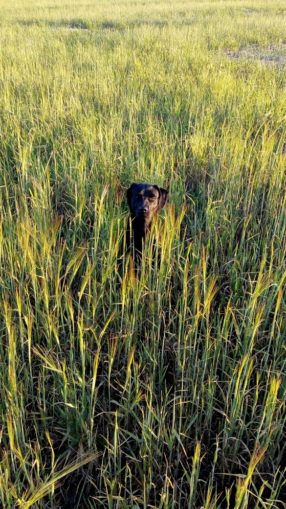
I train all my dogs to be gundog all-rounders, as far as is possible. Labradors are probably the best dog for this job, but with experience you can train any dog to do anything. By all-rounders, I mean they should be able to hunt, mark and retrieve, in any condition either as part of a team or individually. I wouldn’t expect them to do specialised jobs like pointing, but I’m sure you could train a lab to do it if you so desired. I like my dogs to be able to retrieve a duck on the foreshore, pick up on a game shoot or form part of the beating line. I spend a lot of my spare time shooting pigeons, where a dog is expected to wait patiently, often for hours while bird after bird lies ready to be retrieved. Only when it is time should they be released to make a retrieve. This is where the ability to ‘mark’ comes in, and is not something you can easily teach, but having an observant dog certainly helps. They should be able to note the position of every fallen bird, even ones they cannot see come to land and make the subsequent retrieves from memory, often hours later. Patience is a virtue, and a steady sit and stay a necessity.
My personal approach to training always starts with an early assessment of the dogs instincts. A Labrador that likes to carry things around, one that notices and takes an interest in the world around them, and most importantly one that watches their master all the time and wants to be near them is an absolute dream. Not to say that you can’t instil any of those things along the way, it just makes the whole process easier if they are ready and waiting to be developed. Early training needs to be little and often, short 5 minute bursts every hour or so keep things interesting for the dog and not tiring, and will mostly involve little games like hide and seek, where you hide a treat or toy somewhere to encourage the dog to ‘hunt’, and is a useful game to introduce the dog to hand signals and verbal commands. Retrieving games will also feature heavily, with emphasis on ensuring the dog delivers to hand, and gives up the item readily. Getting the dog used to loud noises, water and other dogs ‘working’ in the vicinity are also important things to do early on. As your bond develops, and training progresses, games can become more involved and go on for longer periods. It is very important not to rush the early days, as any mistakes at this stage will render progression later on much more difficult. Solid fundamentals such as sit, stay and recall must all be firmly established before even thinking about starting to train a gundog, and this is an oversight that many amateur trainers make (myself included).
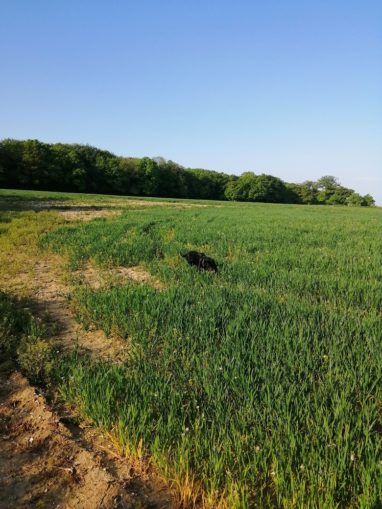
When it is time to move the training to the next stage, I like to get out and let the dog enjoy greater freedom in as many different controlled environments as possible. This can be difficult to do, but knowing of public places locally that offer different terrain or distractions which are safe to allow your dog a bit of freedom will make things a lot easier. If you have access to private land, all the better but this won’t be the case for many. This is when you must learn to trust in your relationship with your companion. By this stage, you should be the most important thing in their life, literally the centre of the universe where your dog is concerned. They really shouldn’t want to be very far from you at all, no matter what the distractions, and certainly in eyesight of you. If it becomes apparent that this is not the case, then back to basics you go. Steadiness, advanced recall and hunting patterns can now be introduced and developed, and some limited exposure to quarry doesn’t hurt, although it’s important to keep it short and sweet so the dog doesn’t become too ‘hot’ and start self-rewarding with bad behaviour, Remember, you should be the only one rewarding the dog, and only positively, I personally never acknowledge bad behaviour or punish my dogs in any way, as negative emotions are a powerful motivator in dogs and will ruin your relationship irreparably. I only ever acknowledge desired behaviour, and when I do, I make sure I really mean it, because they know the difference.
When the time came to test Winnie out in the field, I started by helping out a couple of local gamekeepers ‘dogging in’ (not filth). This is where released gamebirds are forced back from their natural desire to spread out and find boundaries, towards their home wood or release point. Regular boundary walking, along with supplementary feeding in specific locations will hopefully dissuade them from venturing too far, and will therefore ensure they can be found in and around particular drives on shoot days. Taking the dog out along a hedgerow or field margin, there is little chance of being overwhelmed by game and exciting the dog too much, and is a gentle introduction into how to behave when encountering game up close, in ones and twos. As confidence in the dog increases, you can then take them places where they might encounter groups of birds, and then entire flushes. As long as the dog recalls first time every time, you can keep progressing. At this stage, providing you are happy, it’s time to have a go at the real thing.
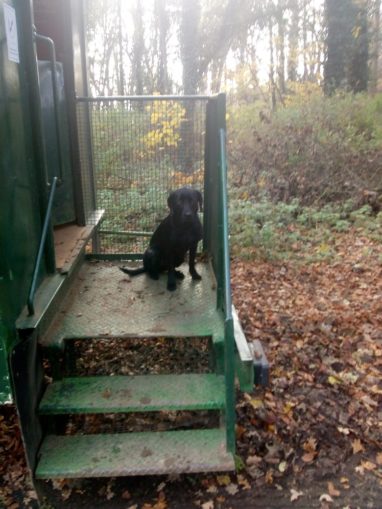
I go beating (known as brushing where I come from), on several local game shoots, some small and some large. A beating dog must be a jack of all trades, and most importantly must be an obedient one. I have lost count of the amount of times an unruly dog has ruined a drive and incurred the wrath of the keeper. Fortunately, my all round approach to training makes for good beating dogs, and so I rarely get on the wrong side of the keeper and more importantly get invited back. A busy shoot day can be a real test for any dog, let alone an inexperienced one, with all the sights, smells and sounds it’s easy to get overwhelmed. When introducing a young dog to beating, I usually keep them on the lead, and allow a few limited free times, usually at the very end of a drive when most of the birds have flushed. You can then gradually give the dog more freedom and responsibility, making sure you don’t overdo it. As young dogs are still developing both mentally and physically, it’s important not to tire them out, so I will only ever do half days at first until they are ready for more.
When the time comes, no task in the field should be beyond the dog. Winnie has proved herself capable of everything I have asked of her and more, with the occasional forgivable lapse. She has become my Top Dog, replacing her dear departed predecessor, and with any luck she will continue to be top for years to come. Jess was the last of the line from my dad’s own line of Spaniels stretching back 7 generations. Unfortunately, she was unable to have puppies and suffered from chronic deafness, so was a difficult proposition, but became the most wonderfully attentive dog I’ve ever known. She was never particularly healthy, and died of a brain tumour aged just nine which was no age really and left me dogless for the first time in my life, something that I swore would never let happen again, but not having a dog in the house really taught me just how much these animals mean to me. As previously mentioned, I already have Winnies successor (more of a contemporary really given the two year age gap) and I have high hopes for her little sister, but she is far too excitable yet to do anything other than play, and I will have much more satisfaction unlocking the gundog inside her than the walk in the park that Winnie was.
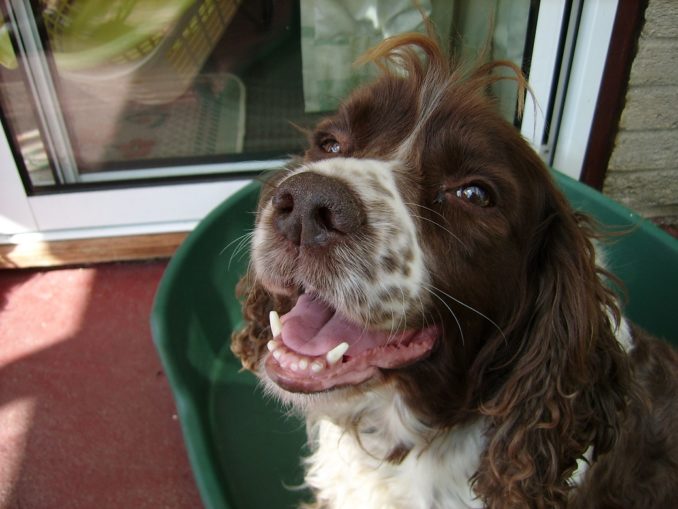
As much as I sing her praises, she certainly has her bad days. Winnie can be prone to suffer from selective hearing on occasion, especially if she thinks she knows better. I have known her to eat some of her retrieves, with her particular favourite being partridge, much to the annoyance of whoever shot the bird. Usually she is steady as a rock, and nothing fazes her, but every now and then, if a hare gets up in front of her, she will chase it and nothing I can do will stop her, proving instinct is a powerful thing. While she is a good gundog, she is not a particularly good pet. Not the most affectionate or happy go lucky dog, she is very aloof and spends most of her time in the house away from the rest of the family and her little sister, snoozing or chewing on antler. She merely tolerates interacting with anyone (except me), will bark aggressively at strangers and will not take instruction from anyone else. She is also a bugger for smelly things, be it a stinking sludgy ditch or a rotting carcase, if it reeks, she will roll in it or eat it. Really, she is a pure shooting machine, and I can’t fault her for that. Besides, her little sister is the soppiest Labrador ever, so she more than makes up for it.
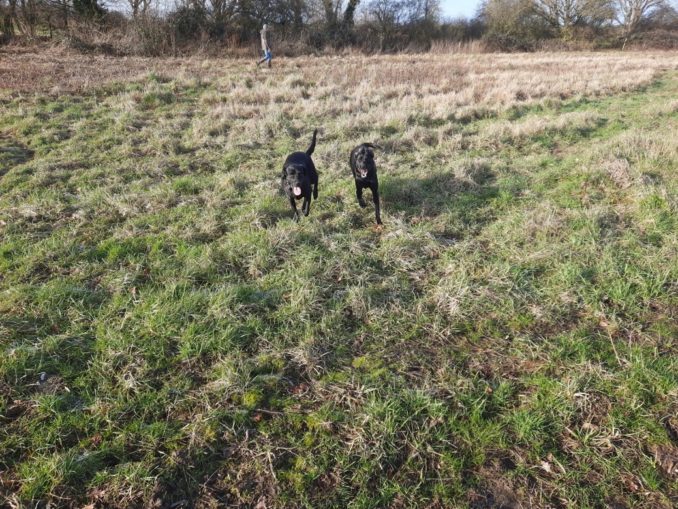
© Columba Palumbus 2021


